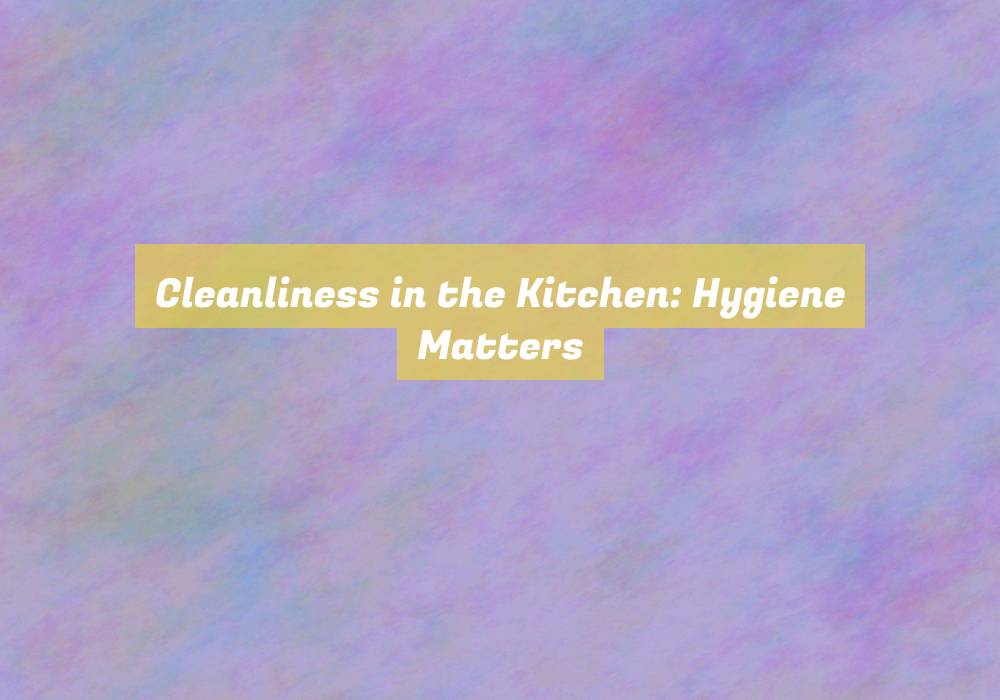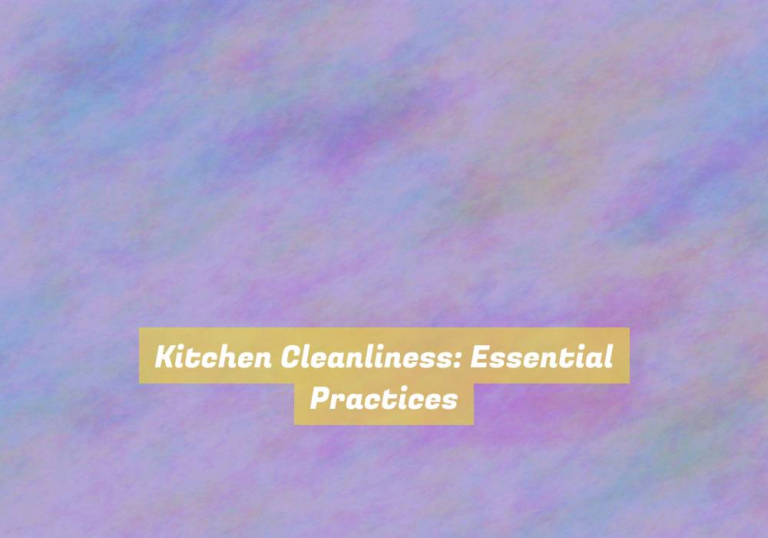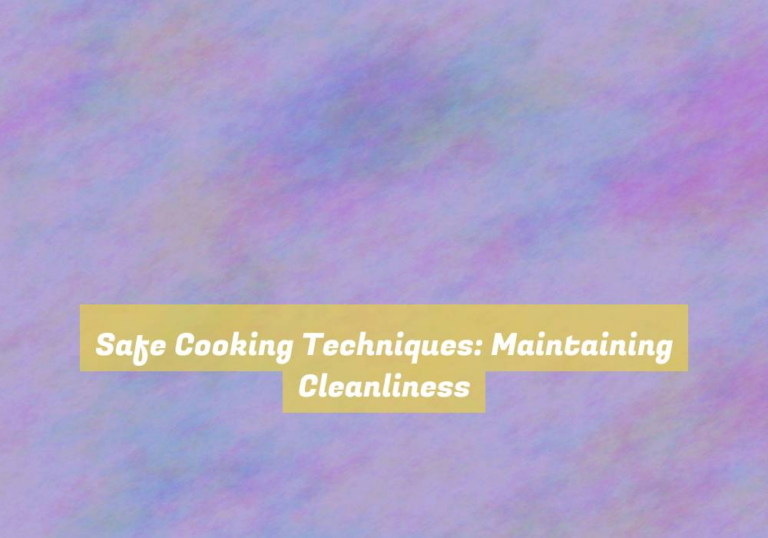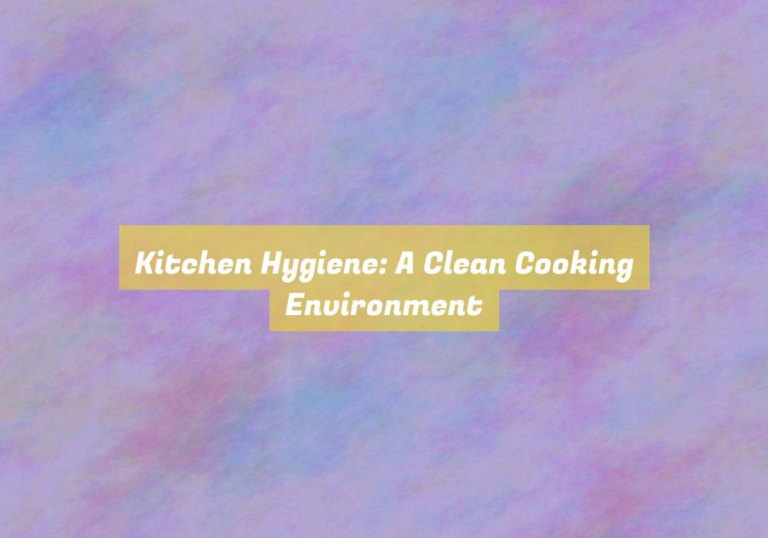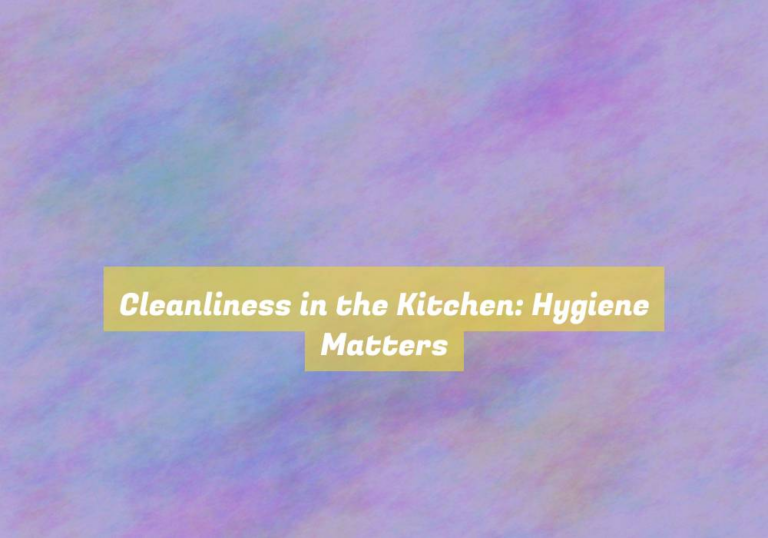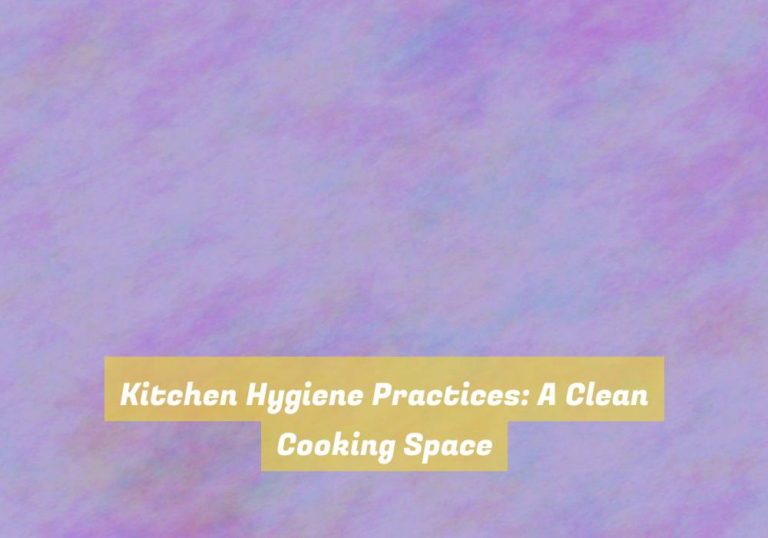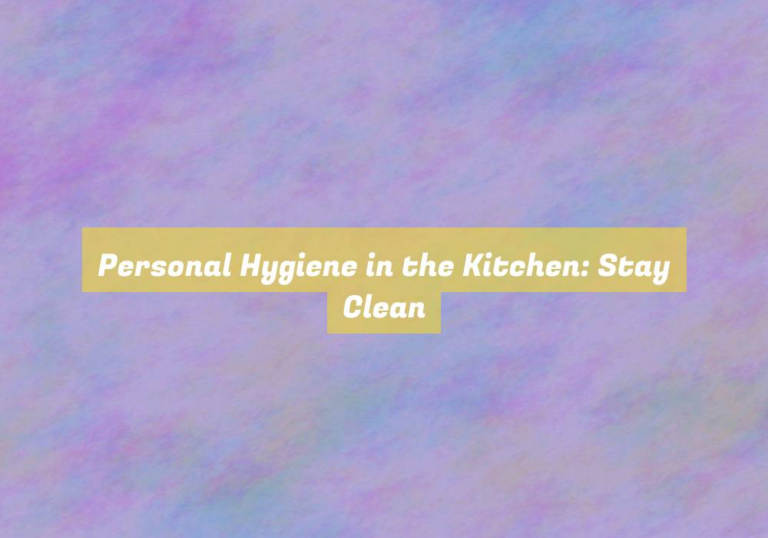Cleanliness in the Kitchen: Hygiene Matters
In the culinary world, cleanliness in the kitchen is crucial for maintaining a healthy and hygienic environment. From food preparation to dishwashing, every corner of your kitchen requires meticulous attention to ensure that hygiene standards are upheld.
But how exactly can you achieve this? LetG??s explore the best practices for food storage, effective cleaning techniques, and maintaining a hygienic cooking environment to ensure that your kitchen remains a safe and pristine space for culinary creativity.
Importance of Kitchen Cleanliness
Maintaining a clean kitchen is essential for preventing foodborne illnesses and ensuring food safety for your family and guests. By keeping your kitchen clean, you minimize the risk of harmful bacteria, viruses, and other pathogens from contaminating your food.
Regularly cleaning countertops, cutting boards, utensils, and other surfaces that come into contact with food helps to eliminate potential sources of contamination. Additionally, a clean kitchen reduces the likelihood of cross-contamination, where bacteria from raw meat or other foods are transferred to ready-to-eat items.
Proper hygiene practices, such as washing your hands before preparing food and after handling raw meat, are crucial in preventing the spread of foodborne illnesses. Furthermore, maintaining a clean kitchen environment extends the shelf life of your ingredients and prevents the spread of pests that are attracted to food residue.
Food Storage Best Practices
To ensure food safety and prevent spoilage, proper food storage is essential in maintaining a clean and hygienic kitchen environment. When storing raw meats, poultry, and seafood, itG??s crucial to keep them separate from ready-to-eat foods to prevent cross-contamination. Always store these items on the bottom shelf of the refrigerator to avoid any drips onto other foods. Additionally, use airtight containers to store leftovers to maintain freshness and prevent the spread of bacteria. Labeling and dating containers can help you keep track of when the food was stored and when it should be used by, reducing the risk of consuming spoiled food.
For dry goods such as grains, flour, and cereals, store them in a cool, dry place to prevent moisture and pest infestation. Be sure to seal these items in airtight containers to maintain their quality.
When it comes to canned goods, follow the rule of G??first in, first outG?? to ensure that older items are used before newer ones.
Proper food storage not only prevents foodborne illnesses but also minimizes food waste, saving you time and money in the long run.
Effective Cleaning Techniques
Are you ready to elevate your kitchen hygiene by mastering effective cleaning techniques?
The first step to effective cleaning is to gather the right tools: a good all-purpose cleaner, microfiber cloths, scrub brushes, and a mop.
Start by decluttering the kitchen surfaces, then spray the cleaner and let it sit for a few minutes to loosen grime. Use the microfiber cloth to wipe down the surfaces, applying extra pressure on stubborn spots.
For tough grease buildup, a scrub brush can be used. Pay special attention to areas often overlooked, such as behind and under appliances, cabinet handles, and light switches. DonG??t forget to clean the sink and drain, as they can harbor harmful bacteria.
Once the surfaces are clean, mop the floors, using a separate mop for the kitchen to avoid cross-contamination.
Finally, wash the cleaning tools with hot soapy water and allow them to dry thoroughly to prevent bacteria growth.
Maintaining Hygienic Cooking Environment
Creating a hygienic cooking environment starts with regularly sanitizing all food preparation surfaces. Use hot, soapy water to clean countertops, cutting boards, and utensils after every use.
Additionally, designate specific cutting boards for raw meat, poultry, and seafood to prevent cross-contamination. ItG??s crucial to replace dishcloths and sponges frequently, as they can harbor harmful bacteria if not changed regularly. Keep dish towels clean and dry to avoid the spread of germs.
Organize your kitchen to maintain a clear and clutter-free workspace, making it easier to clean and reducing the risk of contamination. Store food in airtight containers to prevent pests and bacteria from getting to it. Regularly clean your refrigerator, paying particular attention to spills and expired items.
Lastly, ensure that your hands are washed thoroughly before handling any food items and consider using gloves when handling raw meat or other potentially hazardous foods. By following these practices, you can create and maintain a hygienic cooking environment, minimizing the risk of foodborne illnesses.
Conclusion
So, remember to keep your kitchen clean and hygienic to ensure the safety of your food and your family.
By following best practices for food storage, using effective cleaning techniques, and maintaining a hygienic cooking environment, you can prevent foodborne illnesses and create a healthy and safe kitchen environment.
ItG??s worth the effort to prioritize cleanliness in the kitchen – hygiene really does matter!

